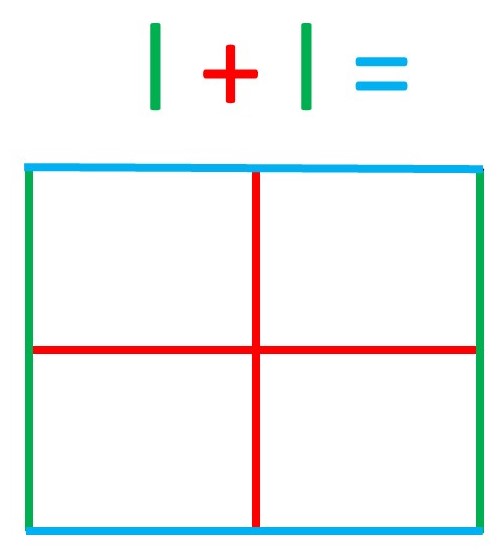
November 28, 2020
There was a day when my son came home with a funny math problem. He printed 1+1= on a sheet of paper and asked for me to solve the equation. I wrote 2. He said, “Wrong! Try again.” I looked at my son with piercing eyes, trying to figure out what he was up to. “I have no idea,” I came back with a smile. He simply said, “Window. 1+1=window.”
He proceeded to connect the two ones to the plus sign and enlarge the equals sign, so the newly looking barbell fit inside to make what looked like a four-celled windowpane. Steven just giggled with joy having a unique new way to see this very familiar equation.
I, on the other hand, was both tickled and moved by a memory of one my first days in class as a student who just entered the Doctoral program at the University of Houston, to earn credentials to lead public schools. It was a day in which I, too, began to see the familiar in a new light. I never forgot the lecture on what was called the Johari Window. It was a model named by fusing Joseph Luft and Harrington Ingham’s first names together.
The model was developed to explain different dimensions of self-awareness. In the first upper quadrant of the window, one is aware of how they convey themselves to the public. It’s the area of the façade, the mask that we all learn to wear as a means for self defense and survival. The lower quadrant represents the privileged knowledge that we have about ourselves that we share with no one. These two quadrants on the left-hand side of the window make up our conscious selves.
Now, on the opposite side of the window, we have the unconscious side of our self. In the upper right-hand quadrant, we have our blind spot. These are the things that everyone else knows about us, but we don’t. In the quadrant below it, lies the unlocked potentials within us that we have yet to discover. We don’t know about them, nor do others.
Through my experiences, I’ve come to learn that no one really ever grows into their own until they harness the humility and fortitude to open themselves up—their hearts and minds—to how they are seen by others and with who I would call the “Mysterious Other”. This requires that you open the window to let the healing winds into your “house” by letting go of all that you once knew about yourself, so you can make room for learning who you were born to be. Otherwise, over time, one stays on the left-hand side of their lives, living in a cold and dreary interior that becomes bitter, lashes out, and mourns the “could’ve, would’ve, should’ves” of their life. Regret is born of remaining closed, locked up, and homebound by fear.
It might look cold “out there”, but better cold “out there” as opposed to the chill inside that makes you feel dead and not fully alive.
